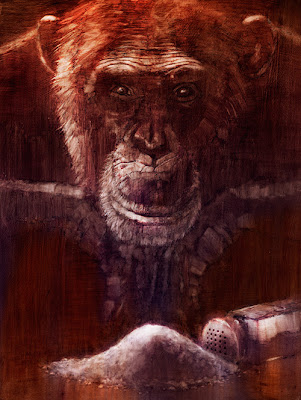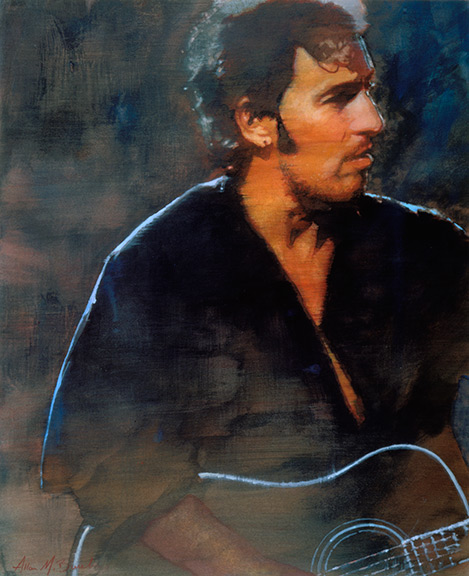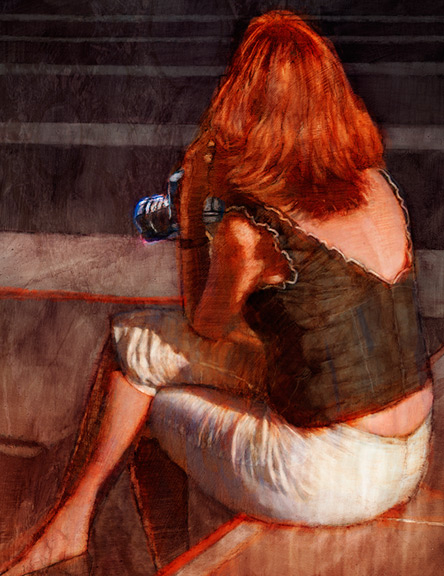
Back in July 2007, TIME Magazine did a cover story on addiction -- the science behind it, hereditary factors, natural tendencies, social influences, and just why people may or may not be prone to addiction. As an exercise, I did an illustration depicting this concept.
At the time, The Soprano's had recently ended it's run, and people were up in arms debating the genius or the outrageous letdown of the final scene. David Chase has voiced his thoughts on what may or may not be behind the lead-up to the cut to black. He said there was no symbolism, but I prefer to think, rightly or wrongly, that there was. In my opinion, "Last Supper" symbolism-meets-2007-Sopranos, in the cafe, meticulously planned and executed...is brilliance!
Anyway, that debate had me thinking about the power of symbolism in art. Something I'm interested in exploring is saying as much as possible with as little as possible. Drawing on people's knowledge and experiences by using symbolism can be an effective tool to do this. The question then becomes: what constitutes a symbol? Does it have to be iconic, like a Freudian cigar, or can it be obscure, like a Rold Gold pretzel stick representing a Freudian cigar?
Here, there is the monkey on the back reference coupled with a lost shaker of salt. I had it on good authority that this reference from "Margaritaville" referred to cocaine. Even if it doesn't, it probably does...to someone.
So, what are you addicted to? Internet social networking, perhaps...blogging, maybe? Who knew "blogging" would become a verb?
In 1996, before "blogging" was a verb, K's Choice, many would argue a one-hit-wonder from the "alternative" genre of 90s rock, recorded an album called Paradise in Me. "Not an Addict" was the first single off this disk. I thought it a symbolic appropriation for this entry's title.
Here's an acoustic version from a solo Sarah Bettens (lead singer).
One of many huge losses to addiction.














